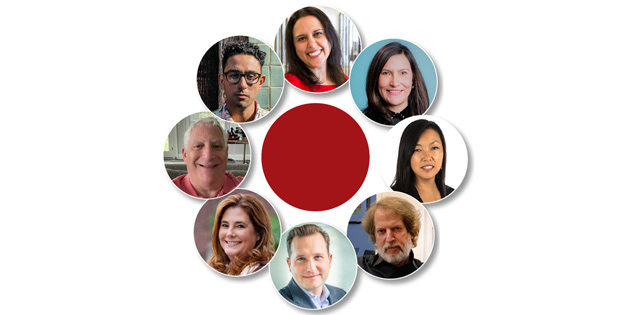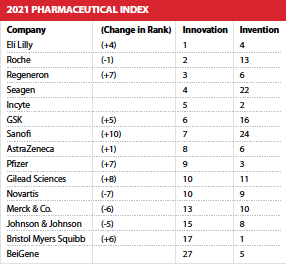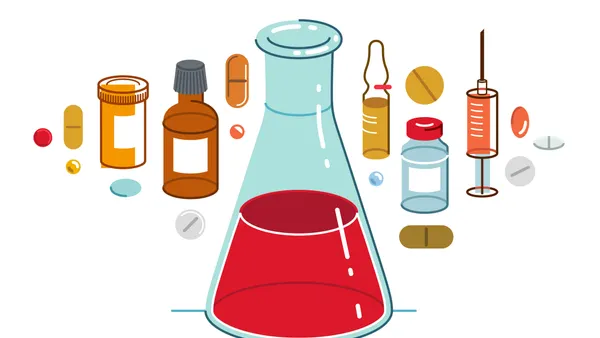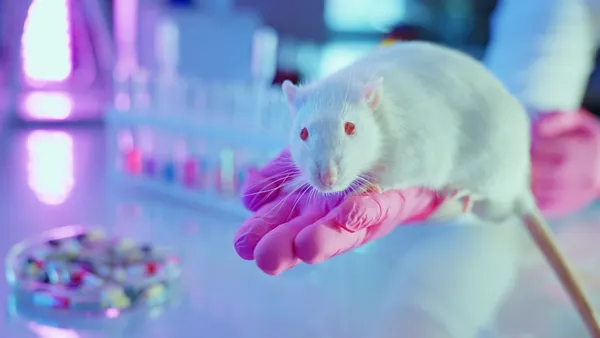We tapped into innovators from around the industry to discover how they view this hot topic and what innovation means to them.
Innovation means different things to different people. Sometimes it’s a big leap and sometimes it means iterative changes to a process that lead to a big impact.
Defining Innovation
 Carmine Jichetti. Ogilvy Health.
Carmine Jichetti. Ogilvy Health.
A few years back, while going through the exercise of convincing the executive committee that an innovation lab would bring value to our company, I did as much research as I could on the subject of innovation. I found a great deal of very overconfident definitions with the words “change" and “disruption" carpet-bombed throughout the literature I read. Well…how do you know if what you’re doing will change or disrupt until you’re finished innovating? Retroactively labeling something “innovation" did not seem right to me. So rather than pass someone else’s definition on, I got a team together and tried “innovating." What I quickly discovered is that it’s a process. First was the realization that it had to be directed toward a problem. Blue-sky thinking without focus turns out to be somewhat detrimental to a timeline. Second was the concept had to be novel. If it’s not new, then it’s really optimization, no? And finally, does it have value or what the specific industry determines to be of value?
Truth be told, to define something means giving it exact meaning. I don’t think innovation should have those guardrails; you’ll just know when you’re doing it. It’s probably the reason it took so long to convince the higher-ups to invest in it.
Anshal Purohit. Purohit Navigation.
Defining innovation means seeing the possibility in every situation and being willing to try something completely uncharted to get there — and fail probably a few times as well. I’ve definitely made my share of mistakes over the last couple of years, and I think that’s part of the innovative process of seeing possibilities and continuing to carve a path until you get there.
Timmy Garde. LevLane.
If you had asked me that question a year and a half ago, I would have answered it very differently. To me innovation is the way to do business right now. We’ve got to be innovative in the way we are conducting business, because under the new normal everything’s changed. Dealing with clients, dealing with patients, dealing with consumers, dealing with advocates, it’s a different way of communicating. We haven’t been taught this way, and we have had to learn by trial. Nobody knew that we were going to go through a global pandemic, and many pharmaceutical companies are global, so we have had to learn to pivot — operating both internally and externally — to bring about the best way to conduct business that’ll lead to the best health outcomes for patients and consumers.
Mike Rea. IDEA Pharma.
The most important observation is separating invention from innovation. It’s the recognition of an idea and ability to bring it to market, which is the classical definition of innovation, creating value or the return on invention.
 All pharmaceutical companies are not the same; some companies are more inventive, and some are more innovative, some are able to launch, some are less able to do that. And that’s a structural, organizational component; they can organize to do better or they can organize to do worse in many cases. These last 18 months have shown us that from 140 or so vaccines we’ve got five or six that are viable for the market. The ability to deliver, the ability to launch, the ability to distribute, to manufacture, are all critical parts of innovation. It’s easy to get drawn into a conversation as to whether innovation is about creativity, the definition that we like to work with is the creation of value from invention.
All pharmaceutical companies are not the same; some companies are more inventive, and some are more innovative, some are able to launch, some are less able to do that. And that’s a structural, organizational component; they can organize to do better or they can organize to do worse in many cases. These last 18 months have shown us that from 140 or so vaccines we’ve got five or six that are viable for the market. The ability to deliver, the ability to launch, the ability to distribute, to manufacture, are all critical parts of innovation. It’s easy to get drawn into a conversation as to whether innovation is about creativity, the definition that we like to work with is the creation of value from invention.
Rob Goodwin. Pfizer.
As a development organization, we have been training for innovation for a long time, similar to a marathon. We had been working through how we organize, how we produce the work we were doing, and how we innovate. So, when the pandemic happened we were ready to go. We’ve all been impacted, and this is what creates a bond for everyone, because no matter where you are around the world, no matter who you are, we all have our ups and downs that we’re dealing with, whether personal or work. We employed everything we possibly could on our vaccine study, every innovation, to move forward with a break through medicine, and we had to breakthrough ourselves in terms of how we do drug development.
Peyton Howell. Parexel.
We have found that a patients-first purpose has been transformational for accelerating innovation. I always knew the power of purpose, but I think we’ve seen it all in action through this pandemic, and how important shared purpose is to driving results and for clinical trials to be patient-centric. We’ve been talking about this for a long time, but now we’re acting on it, and that’s really the connection that we’ve made in terms of innovation — innovating how and where clinical trials are conducted. By connecting clinical trial diversity directly to a patient-centric purpose, we’ve ignited a real passion across Parexel. And that’s really what has made the difference from an innovation perspective.
Joe Dustin. Bristol Myers Squibb.
If there’s any silver lining from this pandemic, it’s the ability to try and push some of the great ideas that many of us have been working on for five-plus years. I’m a technology guy by trade. I try and challenge the status quo. It’s about asking the right questions, finding the right people to surround yourself with, and getting buy-in from those around you to go forward in a change. As the head of clinical innovation, I also oversee change management, and innovation doesn’t happen without change. We all are on a mission for patients. But we also bring science. We are the people who make the medicines that help people, and we have to be infused with what patients need and how the experience should go. It’s never just about the technology — the whole process is about making innovation a reality.
Bruce Hellman. uMotif.
For us, igniting innovation is about connecting with individuals. We listen to the stories to understand what gives patients a better experience. And what we learn from different people, from different ethnicities, informs a lot about how we need to design technology and solutions.
For us, it’s looking at the macro. How can we make a big difference to the world? And then, we go to the individual to understand how we can help them.
Dr. Stacy Wu. Sunovion.
At Sunovion we have strong cross-functional collaboration across all stages of the drug development process — really, at all levels of the organization, we have the ability to reach across the aisle and have conversations and brainstorming sessions with colleagues from different departments. For example, I can talk to my colleagues in discovery sciences who are developing and creating these novel compounds that we’re bringing through in later stages of drug development. And I can just as easily meet with my commercial colleagues to find out what their key drivers for success are. We also have a mindset that every individual, regardless of title or department, has the potential to make valuable contributions. We can use our collective knowledge and experience to reach our common goals. I see one of my main responsibilities as fostering this culture of cross-collaboration that leads to innovation within the company. I believe that it’s the bridges that we build that give us a holistic picture of how each of our individual contributions leads to developing new therapies for patients.
Can Innovation Be Taught?
Carmine Jichetti. Ogilvy Health.
In my experience, innovative thinking does not need to be taught. Most of the time, the people who are involved in the innovation process on a given project are excited to be a part of it. They come in eager to show off their imaginative skills. One of the harder parts of my job is knowing when to corral the creativity for the sake of the timeline.
Restrain it too soon and there might not be enough substance to the idea, too late and it’s a bridge too far. What proves to be the hardest part is coaxing the innovative talent from people who self-identify as “not creative." Most of the time it’s not that they aren’t creative, it’s that those muscles haven’t been exercised. If you’re questioning why those self-deprecators are involved in the innovation process the answer is simple: perspective. Team dynamics play a vital role in the innovative process. Diversity of disciplines combats tunnel vision, which can ultimately limit the process.
Joe Dustin. Bristol Myers Squibb.
Being an innovator has to be part of your DNA. I think you can teach it, but there are some people who are inherently uncomfortable with new things. You have to be willing to challenge the status quo, sometimes I say break the rules. I do think that to able to exel at being innovative is part of one’s DNA. You can follow a process, but again, why is innovation a process? I think it’s a DNA thing.
Rob Goodwin. Pfizer.
I think innovation is part of one’s DNA, but maybe there will be an mRNA jab one of these days that can help bring that out in everyone’s DNA.
Bruce Hellman. uMotif.
Not everyone can come up with the most innovative, most extreme design ideas, but the power comes when you get a group of people working together and through the right techniques, and sometimes, the right processes. Sometimes the best ideas come from the naysayer in the corner or the quietest person in the room.
Peyton Howell. Parexel.
DNA for the big ideas, and we need folks who we can teach to be part of the change management process. We don’t want to leave anyone out of the room. And sometimes it’s that one- degree pivot-type change, which may not be a big idea, but ultimately is so impactful to the process.
Dr. Stacy Wu. Sunovion.
I do think DNA is very important, but I think we can also foster innovation by having the right company culture and team. It’s important to foster an open environment of acceptance of new ideas where every person’s voice is heard. (PV)
~~~~~~~~~~~~~~~~~~~~~~~~~
Pharma Innovators
IDEA Pharma’s Pharmaceutical Innovation Index aims at ranking companies in their ability to bring products from Phase I/II to market and commercialize them successfully, and uses a range of clinical, regulatory, and commercial metrics to do this, ranging from the corporate level down to individual products.
It is important to note that each metric, measure, or index must exist (somewhere), be gettable (either full or derivable), be useable (compare like with like, transferable), and be available across all companies under consideration. Sources include company websites, third-party institutions (e.g. FDA, clinicaltrials.gov), syndicated and analyst reports, etc., which are analyzed and rolled up at the company level for innovation and commercialization and ranked.
~~~~~~~~~~~~~~~~~~~~~~~~~
Igniting Innovation
 Amy DuRoss
Amy DuRoss
Co-Founder and CEO, Vineti
I’m igniting innovation by opening up cell and gene therapies to patients in need.
 Ed Ikeguchi
Ed Ikeguchi
CEO, AiCure
I’m most interested in blazing new trails by exploring the innovations around digital endpoints, and really understanding how these technologies in the form of AI, machine learning, and computer vision can really start to make an impact on clinical medicine and not just clinical trials.
 Jim Lang
Jim Lang
CEO, EVERSANA
I’m blazing a new trail with 4,000 team members by my side. Together we’re reinventing how products are brought to patients. With an emphasis on together, we live our values, and with our life-science partners we are bringing more products to market than ever.
 Brian Wamhoff, Ph.D.
Brian Wamhoff, Ph.D.
Head of Innovation, Chief Operating Officer, HemoShear Therapeutics
Change and innovation seem to always require putting others first, and when you do, good things seem to happen.
~~~~~~~~~~~~~~~~~~~~~~~~~
PharmaVOICE 100 Celebration — Ignite
More than 60 PharmaVOICE 100 honorees from across the years participated in a full-day Celebration virtual event to discuss hot topics, what it means to be a successful leader, how they inspire their teams, how they are sparking innovation, and their views on transformation.
Sparks of Leadership — PharmaVOICE 100 honorees share the keys to successful leadership, how they motivate their teams to reach their aspirational goals, and the leadership traits they look for when building high-performing teams. pharmavoice-100-celebration-sparks-leadership/
Sparks of Inspiration — As inspirational leaders, PharmaVOICE 100 honorees discuss how they raise individual and team performance, unlock potential, and create a culture that fosters passion and clarity of purpose. pharmavoice-100-celebration-sparks-inspiration/
Sparks of Innovation — PharmaVOICE 100 honorees reveal their approach to innovation in their organization, how they create a structure to meet audacious goals, and how they inspire their teams to think outside of the box. pharmavoice-100-celebration-sparks-innovation/
The Red Jacket Panel: Igniting Change — During an in-depth conversation, our 2021 Red Jackets shine a light on a transforming industry, share their predictions for what the future holds in a post-COVID-19 world, and how they are igniting change to create a healthier world. pharmavoice-100-celebration-red-jacket-panel-igniting-change/
Also, PharmaVOICE 100 honorees answer questions from the audience: pharmavoice-100-celebration-ask-pharmavoice-100-session










